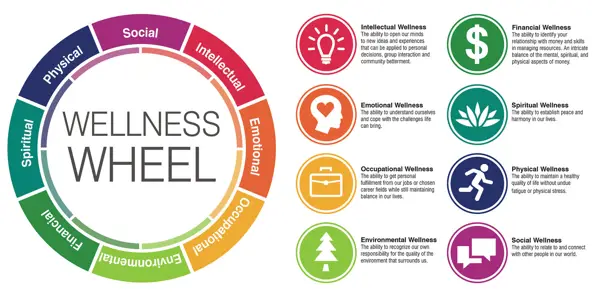Table of Contents
- Introduction
- Benefits of Wellbeing Programs
- Types of Wellbeing Programs
- Implementing Wellbeing Programs
- Measuring Success
- Case Studies
- Conclusion
Introduction
Wellbeing programs for students have become increasingly popular as schools recognize the importance of addressing the physical, emotional, and social needs of their students. These programs aim to improve overall health and academic performance by providing resources and support to students.
Benefits of Wellbeing Programs
Wellbeing programs have been shown to have numerous benefits for students, including improved mental health, increased physical activity, better academic performance, and enhanced social skills. These programs can also help reduce stress and anxiety levels in students, leading to a more positive learning environment.
Wellbeing programs for students have numerous benefits that can greatly improve their overall health and academic performance. Some of the key advantages include:
- Improved mental health: Wellbeing programs help students learn coping mechanisms for stress, anxiety, and other mental health issues, leading to a healthier mind and better focus in school.
- Increased physical activity: Many wellbeing programs include physical activities such as yoga, dance, or sports, which can improve students' physical fitness and overall health.
- Enhanced social skills: Wellbeing programs often involve group activities and team building exercises, helping students develop better communication and interpersonal skills.
- Better academic performance: When students are physically and mentally healthy, they are more likely to succeed academically and perform well in their studies.
- Improved overall wellbeing: Wellbeing programs help students cultivate a sense of mindfulness and self-awareness, leading to a more balanced and fulfilling life.
Overall, investing in wellbeing programs for students can have a significant impact on their overall health, happiness, and success in school and beyond.

Types of Wellbeing Programs
There are various types of wellbeing programs that schools can implement, such as mindfulness training, physical activity initiatives, mental health awareness campaigns, nutrition education, and peer support groups. Each program is designed to address specific aspects of student wellbeing and provide the necessary tools for students to thrive.
Types of Wellbeing Programs for Students
There are several types of wellbeing programs that cater to the overall health and wellness of students. These programs aim to provide resources and support to help students navigate the challenges they may face in their academic and personal lives. Some common types of wellbeing programs for students include:
1. Mental Health Programs: These programs focus on providing students with access to counseling services, mental health resources, and support groups to help them manage stress, anxiety, depression, and other mental health concerns.
2. Physical Health Programs: These programs promote physical fitness, healthy eating habits, and overall wellness. They may offer fitness classes, nutrition education, and access to sports facilities to help students stay active and maintain a healthy lifestyle.
3. Stress Management Programs: These programs teach students how to cope with stress, anxiety, and pressure in healthy ways. They may offer workshops, meditation sessions, and relaxation techniques to help students learn how to manage their stress levels effectively.
4. Substance Abuse Prevention Programs: These programs aim to educate students about the risks of substance abuse and provide resources for those struggling with addiction. They may offer counseling services, support groups, and educational workshops on the dangers of drug and alcohol use.
5. Financial Wellness Programs: These programs help students learn how to manage their finances, budget effectively, and plan for their future financial goals. They may offer workshops on budgeting, investing, and saving money to help students build a solid financial foundation.
Overall, these types of wellbeing programs for students are designed to support their holistic health and wellbeing, ensuring that they have the resources and tools they need to thrive during their academic years.

Implementing Wellbeing Programs
Implementing wellbeing programs requires collaboration between school administrators, teachers, parents, and students. It is essential to assess the needs of the student population and tailor programs accordingly. Schools should also provide training for staff members and allocate resources to support the implementation of these programs.
Wellbeing programs are essential for promoting mental, emotional, and physical health among students. Implementing such programs in educational institutions can help students thrive academically and personally. Here are a few tips for successfully implementing wellbeing programs for students:
1. Collaborate with professionals
Consult with mental health professionals, counselors, and educators to develop comprehensive wellbeing programs that address the specific needs of students. These experts can provide valuable insights and resources for designing effective programs.
2. Create a supportive environment
Foster a supportive and inclusive school culture that values the wellbeing of students. Encourage open communication, empathy, and respect among students, teachers, and staff members.
3. Offer a variety of resources
Provide a range of resources and services to support the mental and emotional health of students. This can include counseling services, wellness workshops, mindfulness activities, and physical fitness programs.
4. Incorporate wellbeing into the curriculum
Integrate wellbeing education into the curriculum to teach students valuable skills for managing stress, building resilience, and maintaining a healthy lifestyle. This can help students develop lifelong habits for promoting their wellbeing.
5. Evaluate and adjust programs
Regularly evaluate the effectiveness of wellbeing programs through surveys, assessments, and feedback from students and staff. Use this information to make necessary adjustments and improvements to ensure the success of the programs.
By implementing wellbeing programs for students, educational institutions can create a nurturing and supportive environment that fosters the overall health and happiness of students.

Measuring Success
Evaluating the success of wellbeing programs is crucial to ensure that they are effective and meeting the needs of students. Schools can measure success by tracking changes in student behavior, academic performance, attendance rates, and overall wellbeing. Feedback from students and parents can also provide valuable insights into the impact of these programs.
Wellbeing programs for students are crucial for promoting mental health, emotional balance, and overall wellness. However, it is essential to measure the success of these programs to ensure they are effective and impactful. Here are some key metrics for measuring success in wellbeing programs for students:
- Improvement in mental health outcomes such as reduced stress levels, anxiety, and depression.
- Increased student engagement and participation in the program activities.
- Enhanced academic performance and overall success in school.
- Positive feedback and testimonials from students, parents, and educators.
- Decrease in behavioral issues and disciplinary actions among students.
By tracking and analyzing these metrics, schools and educational institutions can assess the impact of their wellbeing programs and make necessary adjustments to ensure continued success. Ultimately, the goal of these programs is to support the overall wellbeing and success of students in their academic and personal lives.

Case Studies
Several schools have successfully implemented wellbeing programs with positive outcomes. By sharing these case studies, schools can learn from each other's experiences and best practices. These success stories can serve as inspiration for other schools looking to improve student wellbeing.
Wellbeing programs for students have become increasingly important in educational institutions, as mental health and overall wellness have been identified as crucial factors for academic success. Here are some case studies highlighting successful wellbeing programs for students:
Case Study 1: Mindfulness Meditation Program
In a university setting, a mindfulness meditation program was implemented to help students manage stress and improve focus. Through weekly guided meditation sessions and resources for practicing mindfulness on their own, students reported reduced anxiety levels and increased academic performance.
Case Study 2: Physical Activity and Nutrition Initiative
A high school implemented a physical activity and nutrition initiative to promote healthy habits among students. This included offering fitness classes, cooking workshops, and healthy meal options in the cafeteria. As a result, students reported feeling more energized and focused, leading to better academic outcomes.
Case Study 3: Peer Support Program
At a community college, a peer support program was established to provide students with emotional support and guidance. Trained peer mentors were available to listen to their peers' concerns and offer resources for mental health support. This program created a sense of community and belonging, ultimately improving students' overall wellbeing.
These case studies demonstrate the positive impact of wellbeing programs for students in educational settings. By prioritizing mental health and wellness, institutions can create a supportive environment that enhances students' academic success and personal development.

Conclusion
Wellbeing programs play a vital role in empowering students to lead healthy and fulfilling lives. By prioritizing student wellbeing, schools can create a supportive and nurturing environment that enables students to reach their full potential. Implementing effective wellbeing programs is a worthwhile investment that benefits the entire school community.
Key Takeaways
- Wellbeing programs for students improve mental health, academic performance, and social skills.
- There are various types of wellbeing programs that schools can implement to address different aspects of student wellbeing.
- Evaluating the success of wellbeing programs is essential to ensure they are effective and meeting the needs of students.
FAQ
Q: How can schools fund wellbeing programs?
A: Schools can seek funding through grants, partnerships with local organizations, and fundraising efforts.
Q: How can teachers support student wellbeing?
A: Teachers can incorporate mindfulness practices, promote physical activity, and create a supportive classroom environment to support student wellbeing.



Recent Comments